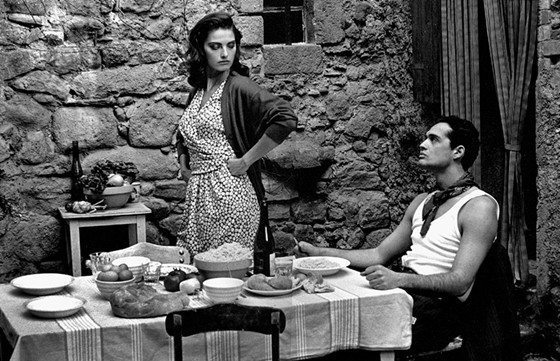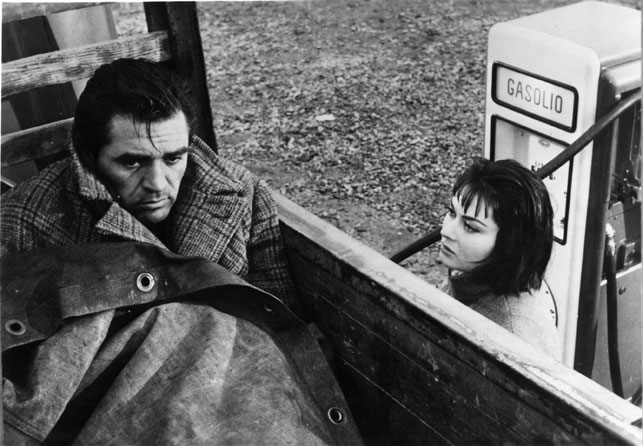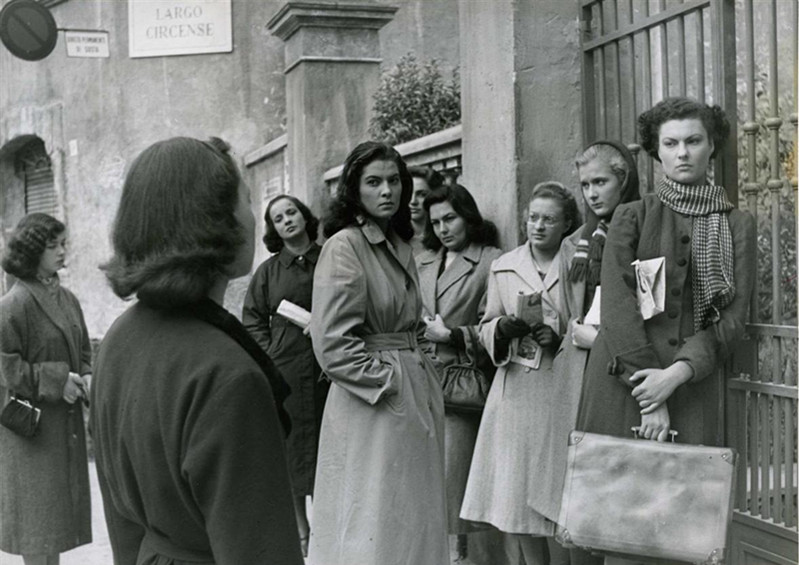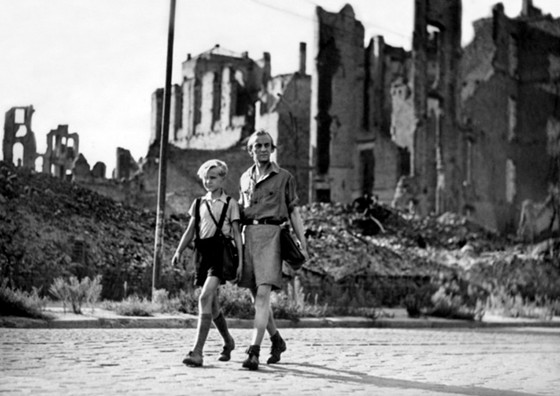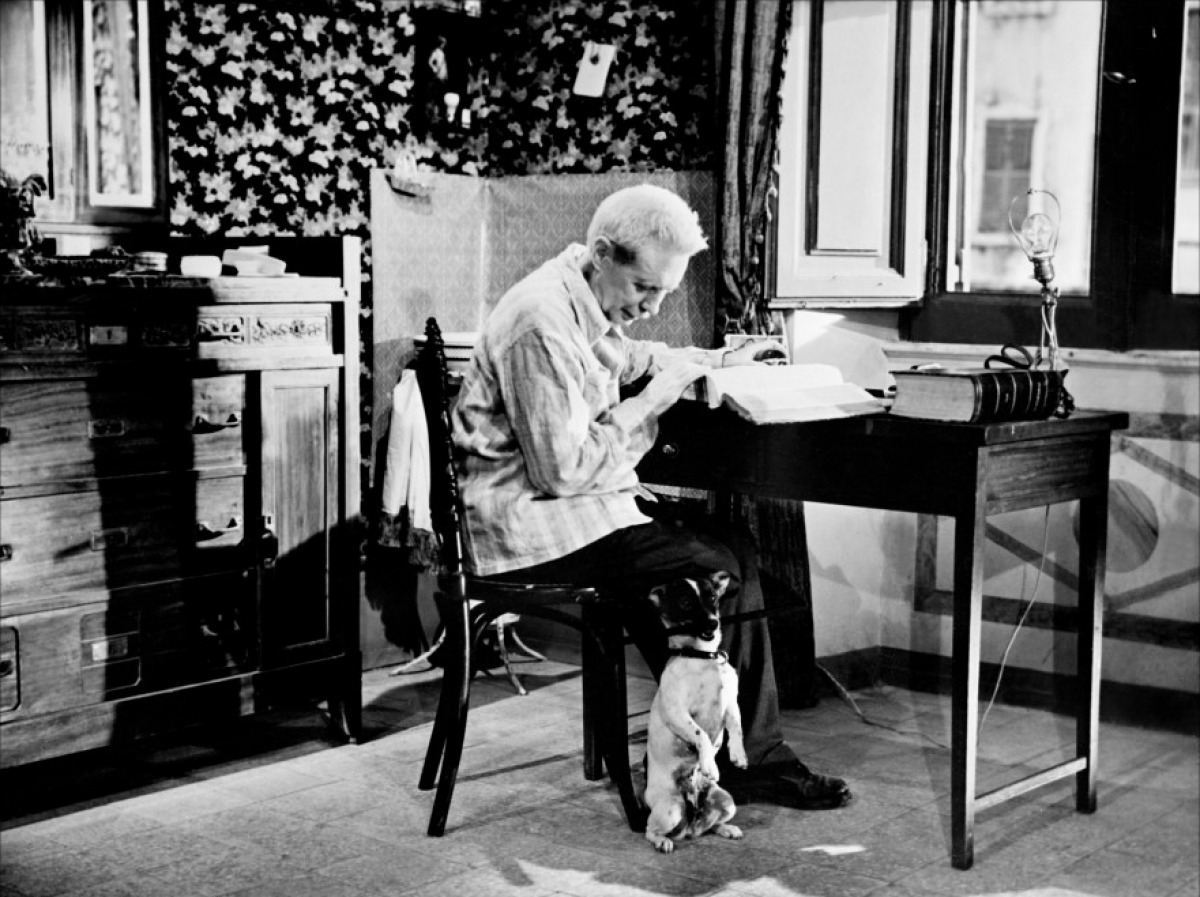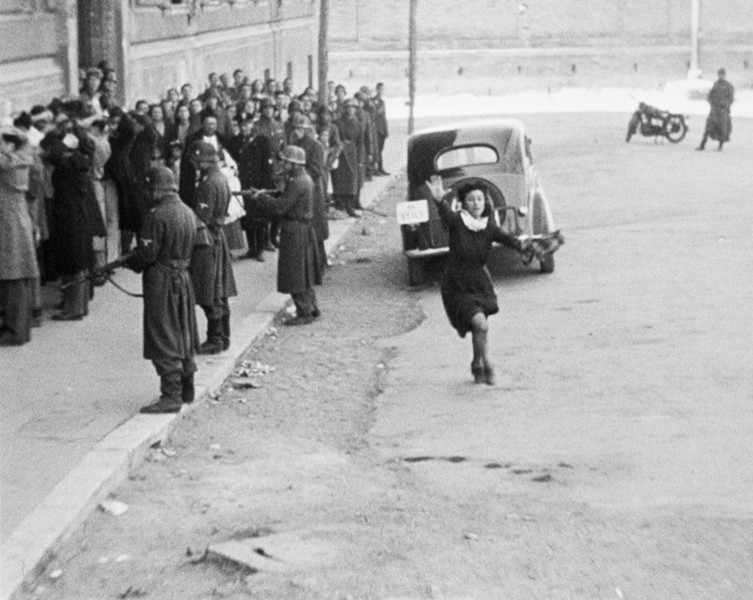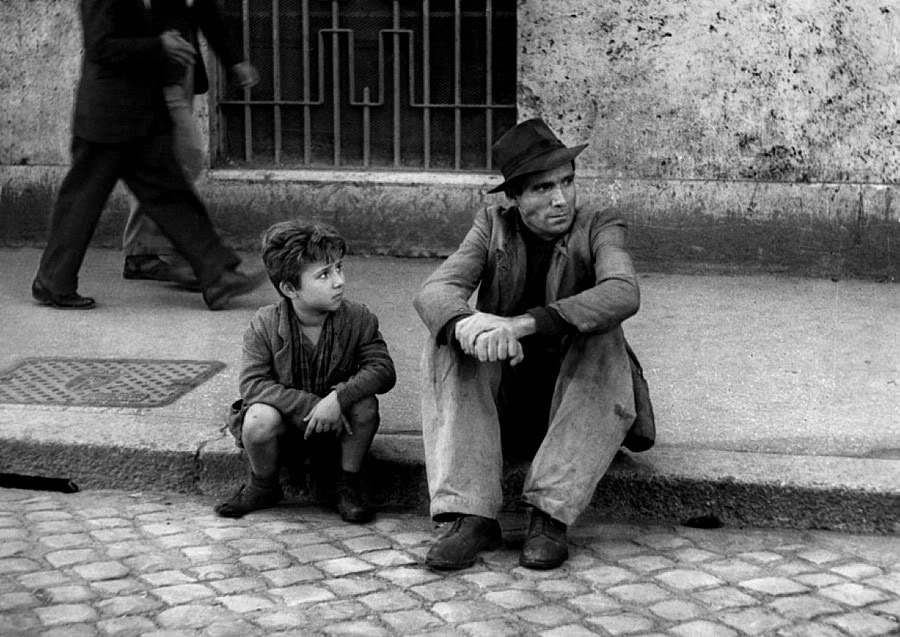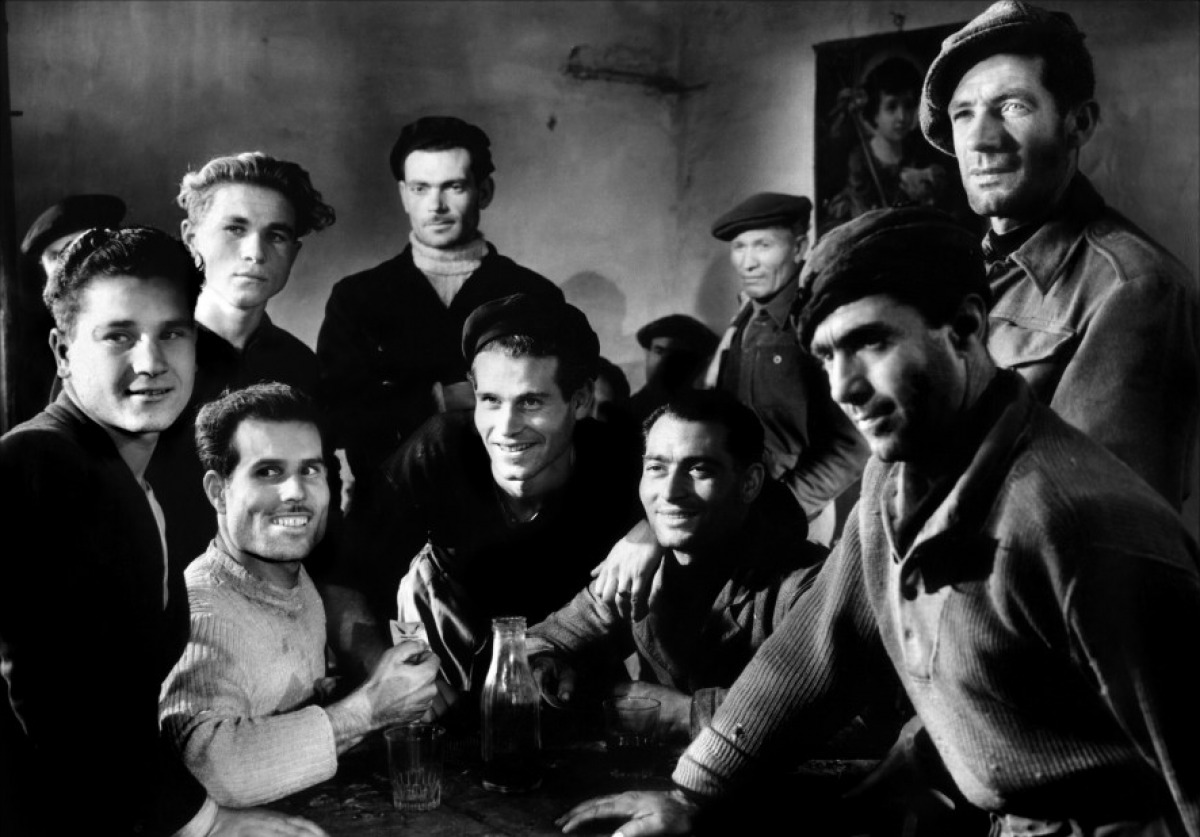8. Ossessione / Obsession (1943)
Visconti’s early adaptation of James M. Cain’s crime masterpiece “The Postman Always Rings Twice” has been considered as the first Neorealism movie by many critics and film historians. However debatable, this first Neorealist movie done under Fascism, like its successor (as Tay Garnett’s movie based on the a novel of the same name), is a genre-defining movie.
Ossessione has bunch of moments added by Visconti, that is enough for a movie to be considered as Neorealist. His realist vision of the events in the movie embraces all the characters in their natural flow of life and envelopes each to show the audience their real personalities.
7. Il Grido / The Cry (1957)
A Great Italian director and magnificent visionary, Michelangelo Antonioni is best know for his movies on modern life in cities, loneliness, identity crisis and relationships. However, Antonioni, like all artists of his generation, was an established communist when he was young; and this very film paved the way for his banishment from the Party.
Il Grido tells the story of a lonely working class man whose life is devastated by his lover’s decision to leave him. Struggling with this fact, Aldo wanders around, only to face pain scattered everywhere. A prostitute, an ex-lover, desperate elders, cruel rich people, all make him frustrated and lead him to confusion.
When he returns to his hometown, he finds out that the city is to be demolished for an airplane construction. His life, like the rural Italy, is marching towards an end. With the controversial ending, the film is an important example of late-neorealism and marks the change that Antonioni would be taking.
6. Roma ore 11 / Rome 11:00 (1952)
De Santis’s second movie in the list, actually, is a distant cousin of “They Shoot Horses, Don’t They?”. Set in the 50s and based on a real story, this film tells the tragic events before, during and after a staircase accident.
Hundreds of women from different classes, different neighborhoods, with different lifestyles and experiences gather in an office for applying a vacant position as a secretary. These women talk about ordinary things until there is a fight for a queue problem. Everything changes after the stairs they were standing on was broken.
Roma ore 11, like his other movie in this list, is another movie that focuses mainly on women. The story depicts the hard times when Italy tried to get on its feet economically and how people were fed up with each other in the face of poverty.
5. Germania, Anno Zero / Germany Year Zero (1948)
This is the final part of Rosselini’s war trilogy and the only film in the list which is not set in Italy. Germany Year Zero tells the story of a German boy Edmund who has a bedridden father, an ex-Nazi brother, a problematic sister and a Nazi and pedophilic teacher. Edmund and his family is broke and Edmund tries to make everything better for himself and his family; however, in the end, like the shoeshine boys in the De Sica movie, a bitter end is waiting for him.
There are inner dynamics of German people during the Nazi reign in this film. As an Italian suffered from Nazis’ rule, Rosselini, tried to reflect the indifferent, disconnected life of German people. Yet, it was not hard for him to do so, since when they were filming the movie, people around did not care about the shooting since they were in urge of taking shelter, food and clean water.
4. Umberto D. (1952)
Umberto D., portrayed by a professor of linguistics, the wonderful Carlo Battisti, is threatened with eviction by his landlady. Umberto, who is living with his brilliant and loving dog Flike, tries to pull himself together and gather the money needed for him to stay at his home.
In this simply and touching film, De Sica casts non-professional actors and actresses to show what clinching to life means. Umberto D. tries to find ways to gather money but he knows it will be useless. If he can find it, for the next month, there will be no chance. Still, he holds on to his life and listens to his maid’s problems. He holds on to his life so beautifully, and he suffers so beautifully that even in a condition like his, life seems like the best thing we’ve ever had.
Yet, this is not a feel-good movie. The film opens with a police attacking on retired, elder people since they are demonstrating for better rights. De Sica, beforehand, shows that what Umberto D. will be going through is not an adventure of whatever the problem is. It tells us that life is beautiful and “worth fighting for”. This moving, heart-breaking tale of a retired government worker Umberto D. is a true masterpiece of Neorealism.
3. Roma, Citta Aperta / Rome, Open City (1945)
This is when one of the most beautiful cities of the world, Rome, meets with a beautiful face which is now an icon of cinema, Anna Magnani. Roberto Rosselini, in his first link of his genre-defining trilogy, Roma, Citta Aperta, shows Rome under Nazi occupation. It tells the story of brave people of Rome working for the Resistance. However, it is far from being a simple propaganda film.
In Rosselini’s movie, the City Rome gets to take an important role. Before all characters in the movie, Rome itself, is resisting. With all its holiness, it is as if Rome was depicted as Aldo Fabrizi’s great portrayal, Don Pietro. No one can put an end to the violence, torture and injustice. Rome stands still, it is stigmatized, it is tortured, it is insulted but standing still.
Rosselini is one of those greatest directors who could at least once captured the truth in the cinema. His powerful story, co-written by Fellini, combined with his nearly documentary-like approach, and he created some of the most moving images of the cinema history. This Golden Palm Winner is a must-watch not only as a Neorealism film, but a masterpiece in the history of cinema.
2. Ladri di Biciclette / Bicycle Thieves (1948)
From Chaplin’s The Kid to Hollywood blockbuster The Champ, Ladri di Biciclette / The Bicycle Thieves is maybe the most intense drama about a boy/girl and his father in the history of cinema. Antonio, earning his life and feeding his family with his bicycle, is a lower-class family guy. One day his bicycle is stolen. He wanders around the streets of Rome with his son Bruno, trying to find it.
The father and the son are like the dog and the old man in De Sica’s “Umberto D”. Their quest ends in pessimism. They lose their faith in finding the bicycle, but do they lose their faith in life, in humanity? Did we?
1. La Terra Trema / The Earth Trembles (1948)
La Terra Trema / The Earth Trembles is an epic movie of Neorealism and one of the masterpieces of Luchino Visconti. Like Gente del Po of Antonioni, this story tells the story of a small village in Sicily where people make money from fishing.
However, Visconti’s movie is not a documentary. Yet, it is far more than a documentary. Visconti gives everyone the role to play themselves or some other fictional character in their position. In La Terra Trema, the oldest boy of a fisher family, Ntoni, comes up with an idea to get rid of wholesalers. However, nothing goes well, nature and life have surprises for them. In the end, again they are forced to work for the people who hold the money in their hands.
A near 3-hours drama, La Terra Trema loosely follows this story while depicting the life of the fisher village faithfully. In his editing, Visconti never left out anything, since every process of everyday life struggle, each element in the lives of fishermen was important.
This brings the sense of docu-drama with Visconti’s conscious choice to keep the distance between characters (actually, they are not characters, after all, they are real people) and the spectator. However, it is also an ethical choice. He would like us to get at least an understanding what it is to be a fisherman or how it feels to live in a village like this, being obliged to do something, being a slave, in a manner; nevertheless; he knows that this feeling can be sensed but never felt thoroughly.
The communist party of Italy of which Visconti was a devout member, gave money to Visconti to make a film about fishermen for their election campaign. Visconti made it beyond the intention. Rather, he made a movie that is striking, that reveals the truth about life, that puts the spectator not in the shoes of his characters, but next to them, shoulder to shoulder.
Author Bio: Ekin Can Göksoy is a social scientist/author with an M.A in Cultural Studies from İstanbul Bilgi University, Turkey. He is working on subcultures, sociology of Internet and freedom. He is an occasional cinema writer pursuing his aim of making movies since 7th grade when he watched The Man Who Knew Too Much of Alfred Hitchcock who happened to be his favorite director of all-time.
